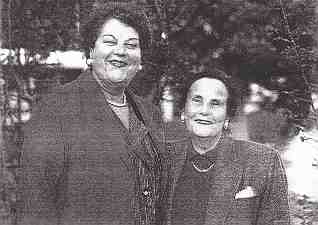Cohen’s study, however, falls short from treating the question of how and why the Judeo-Spanish or Ladino repertoire transmitted orally by women survived before the twentieth century within a male dominated, patriarchal, religious and text-oriented community in a Muslim context, far away from its Iberian origins. One reason why this question was not addressed directly is that modern ethnography takes for granted the central role of women in the transmission of the Sephardi tradition and excludes ethnohistorical sources. These sources show us that between women and the spiritual leadership of the Sephardi communities there was a relation of : a) confrontation, i.e. rabbinical opposition to women singing in general, and to the singing of Judeo-Spanish traditional songs specifically, and b) resistance, i.e. Sephardi women created their own time and space for the performance of their songs.
Confrontation is rooted in the segregation of the female singing voice, which is wider in scope than other Jewish religious rules concerning female segregation, such as those which relate to menstruation. Girls and adult women do not menstruate and are therefore exempted from the limitations imposed upon women by the rulings on this issue, but they do sing. Sephardi women of all ages engaged in the active, assertive behavior of singing as a form of resistance, not as passive "vessels" of song transmission, as Cohen (1995:182) described it. Sephardi women often had no particular sense of being limited in their choices by the traditional gendered social system of Judaism, any more than men. Ethnographic evidence attest the independent character of the Sephardi women’s musical activities. Ladino folk songs were performed around the Mediterranean within the time and space of women’s activities, for audiences of women and children, as a pastime (for example while nursing the mother of a new baby during the days prior to the circumcision) or accompanying chores such as laundry, rocking babies and cooking. Sephardi men could certainly hear their women’s songs in those rituals related to the life cycle where physical segregation was relaxed: weddings and funerals (see Cohen 1980:86). Susana Weich-Shahak (1984:30; forthcoming), who has carried the most extensive ethnography of the Sephardi folk song in Israel and abroad, reports the existence of societies of female singers, usually called compañas, which met once a week to sing together, each time in the house of a different woman. These associations used to be invited to weddings to cheer up the audience and they were rewarded by the audiences for this deed. The revenues of the society were usually invested in donations for the trousseau of poor brides. There is probably some relationship between these associations and other, more formal, societies of singers in Sephardi communities in the past, such as the hevrah kadisha ("The company of kaddish [singers]") which sang in burial processions and weddings. When they sang at weddings in Morocco, these companies included young girls too. Some Sephardi women were renowned as cantaderas, semiprofessional singers who accompanied themselves with tambourines and frame-drums called pandero or panderico in the Eastern Mediterranean or sonaja in North Morocco. In Morocco one also finds among female singers the use of castañetas (called castañuelas or palillos, played rather "unprofessionally" by using only one pair hanging loose from the middle finger and activated by the free hand), an obvious import from Southern Spain. Female performers of percussion instruments in the Balkans and Turkey were called tañaderas. It is interesting to note that the female drummer-singer-dancer in Eastern Mediterranean Hebrew culture as "indicative of a much more extensive and important realm of female activity that would otherwise be acknowledged" goes back to Biblical times, as Meyers (1994) has pointed out on the basis of recent archeological findings. Sephardi female instrumentalists were not restricted to playing percussion instruments only. The traveler Victor Guerin, for example, witnessed in mid-nineteenth century Rhodes how Sephardi girls and women used to meet regularly at the fountain in the calle ancha ("wide street") and noticed that most of them knew how to play "a guitar that resembled a Spanish mandolin and accompanied singing and dancing at celebrations" (1856, quoted in Angel 1987:100). Weich-Shahak (personal communication) reports that the playing of string instruments, the ‘ud, the mandolin, and even the qanun, was customary among Eastern Sephardi women in the early 20th century. Considering the available data, one can assume, following Robertson (1987:242), that Sephardi women "developed their own styles of communication and intimacy", and "that these styles create bonds that are often fortified by gender separatism in male-centered societies" (see also Magrini 1995). We shall now investigate under which social conditions these developments took place. |
